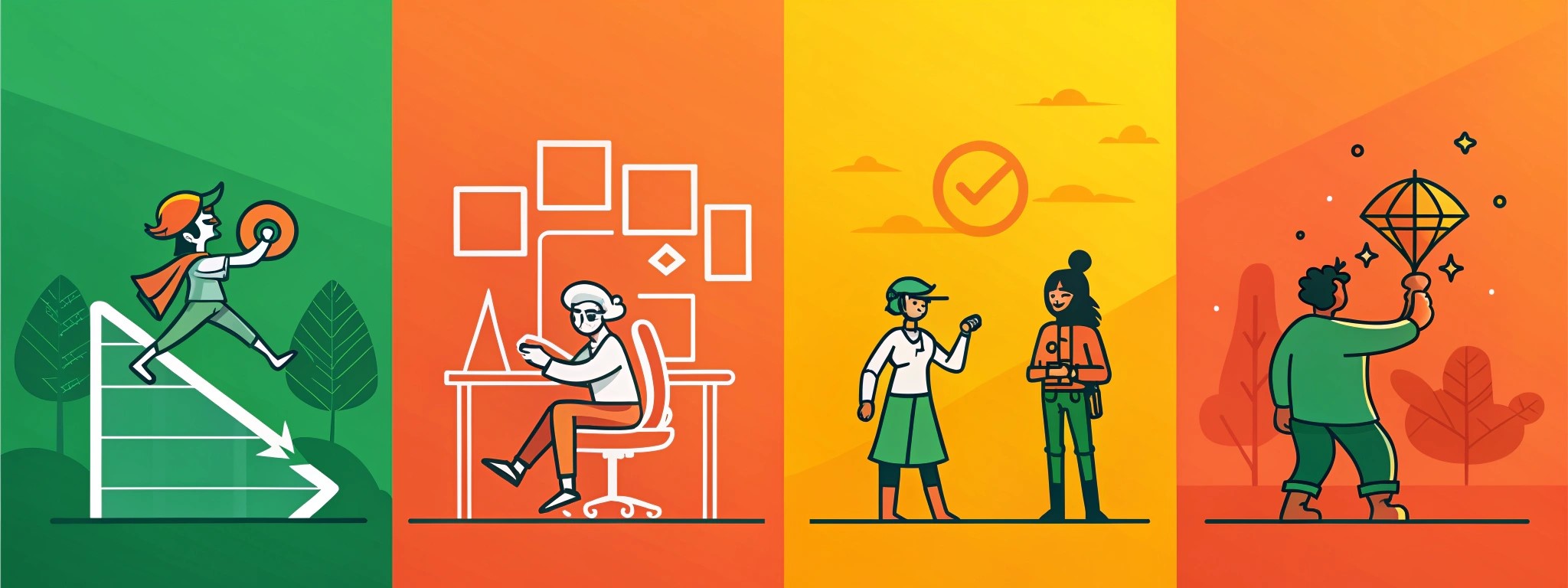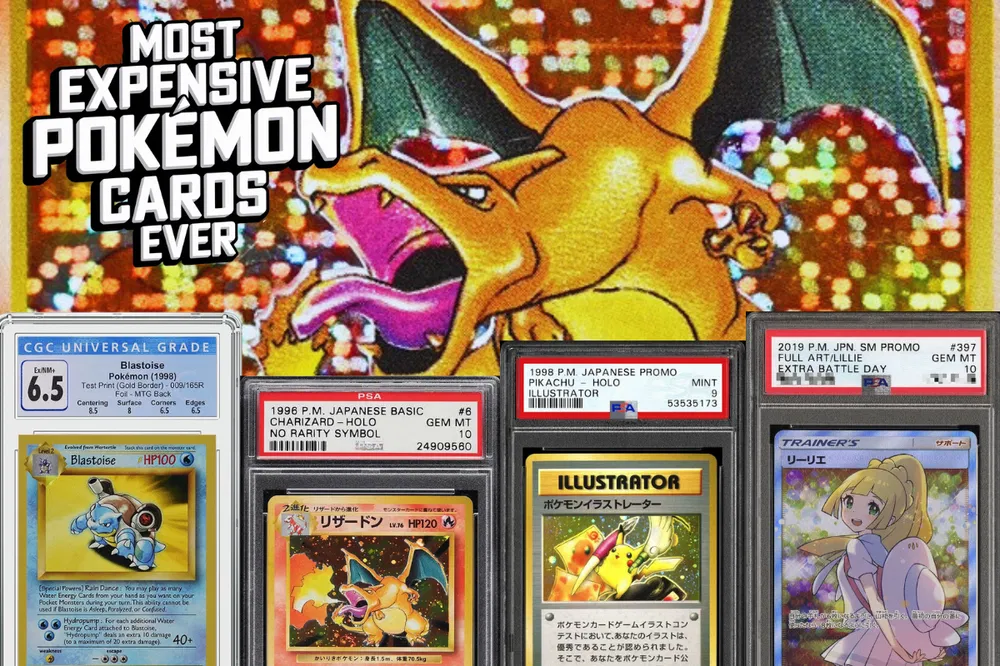Even brilliant ideas can have a sure way to fail when it comes to game development. If you sometimes feel that the stages of game development are an easy process, remember that there is always a chance to stumble upon pitfalls or make mistakes that will lead to developers’ nightmares. It is impossible to know if the game will succeed in the future, but you can try your best to plan the development cycle of the game well, with a detailed study of every nuance. Whether you’re an indie developer or a game development company, having a step-by-step development plan isn’t enough, you need to keep all the peculiarities in mind. Therefore, you should take a few minutes of your attention and study this article, which contains all the key phases of game development with a focus on some important tips.
Creating a Game From Scratch: Search for Ideas
Obviously, every game project starts with an engaging and unique idea. Your idea may be similar to others but should have something catchy and unique that other games don’t. You should make a qualitative analysis of players’ reviews of popular games and game streamers’ opinions. It might seem like a very obvious thing, but in fact, it helps to better understand the desires of the players about certain game moments. If you read a review and stumble upon a player’s dissatisfaction with game timings, uncomfortable interface, or other features, you should write it down and do it differently in your game. The search for an idea is the developer’s need for careful market and competitor analysis and getting inspired, which may take a lot of time before creating a game.
However, one idea is not enough to fully develop a real hit. Let’s dive into each stage of game development and learn about the most important moments!
What Are the Main Stages of Game Development?
Usually, the full game development cycle includes pre-production, production, testing, pre-launch, launch, and post-production. Certain groups of specialists work at each of the development stages, and the importance of each of these phases is extremely high. Poorly created script or wrong timing can lead to a lot of trouble and waste of time, which often scares programmers and designers.
Pre-Production
Pre-production is the stage of game development that involves bringing together all game specialists who determine the scope of the project. At this stage, the developers carry out goal setting and determine exactly how the game will function, how the characters will act, what the game environment will be, and so on. To do this, game developers create a game design document (GDD), in which they write in great detail about the characters, game story, theme, goals, gameplay, game mechanics, and user skills. This document is the basis and step-by-step detailed plan that developers adhere to during the creation of the project.
So what questions should be discussed at this stage of development?
- Market research. As we said above, researching and making an analysis of games that are popular and successful now is an important part of pre-production. It is worth learning which games make the most profit and why they are so in demand in the gaming world. What is attractive about the most popular games on platforms like AppStore or Steam? This will give an understanding of modern trends, innovations, and technologies that successful developers use;
- Target audience. It’s important to know who might like your game, what age, gender, and other characteristics of the potential player, and why people would choose to download your game. There are no games that absolutely everyone likes, so the developers determine the target audience and strive to satisfy all their possible wishes;
- Game budget. Often, developers skip this step and this is fundamentally wrong. The allocation of the budget helps to avoid various unpleasant pitfalls in the process of creating a game that can interfere with the development plan. A limited budget makes it possible to understand what is the “ceiling” of your capabilities. It would be foolish to create an AAA game with last-generation graphics if you don’t have the money for it. You should properly assess your capabilities;
- Game genre. Only after evaluating the possibilities of your budget, you can proceed to the choice of a game genre. You could have done this even earlier when you were conceptualizing or creating GDD. You can choose RPG, arcade, hyper-casual, simulator, puzzle, racing, strategy, single & multiplayer games, as well as VR and AR solutions;
- Game platform. The choice of a playground directly depends on whether you want to create a mobile or PC game. Your best bet is to choose cross-platform development and host your game on multiple gaming platforms. It will cost more but will make the project more accessible and popular;
- Type of monetization. Each game has certain items for real money or in-game ads. Moreover, you can make the game paid on mobile or PC platforms, but this significantly reduces the chances of success.
Paying attention to all these points, the developers are ready to create a full-fledged GDD for future game development steps. If this information is not enough for you and ideas do not come to mind, you can ask yourself a few questions that will help you find the true way:
- How much time do I have to develop a game?
- What makes my project different from the rest?
- Which feelings am I trying to deliver for players?
- Do we need to hire more game specialists?
Why is it so important to create a GDD document? While some poor game development companies skip this process, others get valuable results. First, you can forget what decisions were made. In this case, most likely, you will have to think over the feature again. While deadlines will run out, the result not turn out the way it was planned. Secondly, you are wasting your time on unnecessary explanations and additions that could have been avoided. And thirdly, the producer and the whole team do not get what was planned. It is worth remembering that we cannot keep every detail in our mind and you can forget necessary information, so it is better to write down detailed instructions for developing a game in the game design document.
By the way, the development of GDD requires more accurate information, so we advise you to describe the plot, characters, level design, gameplay, and other features in more detail.
Production
Production is the longest and the most resource-intensive of game development stages that implement plans and brings ideas to life. The team prepares the necessary art, animates, adjusts the game balance, and tests a lot. The voices of the characters, background music, sounds, storytelling – this is what specialists are working on. The producer and project manager find out if all work is scheduled and deadlines are met. They also conduct detailed market risk research and try to predict how successful the game will be.
At the production stage, developers spend the most money on specialists and materials as a result of which we get the first version of the game. This is the reason why it is best to set a budget in advance. Let’s look in more detail at what work the production stage includes:
- Prototyping. Prototyping is one of the initial stages of development, during which developers create a preliminary design of a game. The prototyping mockup shows the user’s interaction with the design interface. A prototype allows to present of the project to the customer and evaluates its usability. Testing allows game developers to identify and eliminate errors in advance before investing in the development of the final design solution and coding. The main goal of prototyping is to save money and see what the game will look like. Moreover, we all know that it is impossible to do something perfectly the first time, so it is important to can make adjustments. Fixing mistakes on a prototype is much easier than changing an already finished project and losing money;
- Visual content design. Visual design is all the objects in the game, for example, the environment, characters, items, game assets, and so on. Depending on the type of game (3D or 2D), games may differ in time and investment. 2D games are distinguished by their simplicity and are most suitable for creating easy games. If you plan to create a complex 3D project, you will need more specialists, money, and time. This is because the process of developing a 3D game includes modeling, rendering, sculpting, rigging, rendering, and lighting. Hence, the development of such games will require more knowledge and special tools;
- Game level design. An important goal is to maintain the interest of the players throughout the gameplay. Each level should be unique and bring new experiences to the player because the same type quickly gets bored. The process of game level design includes the development of game mechanics, missions, obstacles, and other features that diversify the game;
- Sound design. The next stage of the production stage is the development of sounds and voices. For example, a special sound may appear in the game before something scary. Game specialists also adjust the voice that suits the character. It is important to adjust sounds such as rain or wind to give the game a special atmosphere and realism;
- Writing codes. After the developers have come up with all the details of the game, programmers begin to develop the game and write codes. As we all know, one small mistake in the code can create a whole problem, which is a real nightmare for game developers. Therefore, this stage of creating a game is the most difficult, because programmers put the project together in parts, like puzzles.
Testing
In today’s realities, game testing is so important that the future of your project depends on it. There is always a time limit and the developer sets the time when the game should be ready. Due to tight deadlines, developers may miss the opportunity to do quality testing of games and identify all the errors, which leads the project to failure.
The gaming market is oversaturated with impressive projects that players can easily find a replacement for if they do not like your project. One serious mistake and the success of your game can fail. For this reason, testing a game is a serious step in determining the future of your project. Game testers become potential players and identify errors in the code or bugs, after which they make a report and programmers fix errors. Developers can even hire multiple teams of testers and each testing something important, like how clear a tutorial is or how easy it is to complete levels. When all bugs are fixed, the product is ready to launch.
Pre-Launch
In some cases, this step can be skipped, but if you decide to create a large-scale AAA game for PC or consoles, in which you have invested a lot of money, it is worth sticking with the pre-launch step. In these game development phases, you advertise your project and tell people what you’re about to release. You can hire a designer and develop a promotional video for your game or advertise on popular platforms. The more people who know about your game’s imminent release, the faster you’ll gain an audience.
Launch
Finally, you can release your game and allow people to download it in popular game stores. Hundreds of nightmares are left behind and a real game that is ready to break into the gaming world is right in your hands! At this stage, developers can make minor adjustments or change some details. However, the game development process is not over.
Post-Production
Everything you do after the launch of the game is called post-production. This includes such steps as fixing bugs and creating patches for further downloads by users to avoid lags. Moreover, you need to regularly improve the game by making small changes to keep up with the trends and maintain players’ interest. Post-launch includes new updates, tournaments, giveaways, and other changes to keep players interested. If you don’t make new content, audience interest will quickly fall. The work on the game is not finished yet and you need to frequently improve it for new players to make a profit.
4 Game Development Tips to Make Your Game Successful
- Train your time management skills
Throughout the game development cycle, you will be required to meet the timelines specified by the customer. It is important to meet all deadlines and not disappoint customers, and also not change the release date of the game. Your work schedule may be very tight, but it will help to create a game faster. For this reason, you need to plan your time more carefully and learn time management skills.
- Use free assets
Using free assets is so cool, especially if you are a beginner developer. Free platforms like Unity Asset Store have quality models and textures to help speed up the development process and make your life easier. There is no shame in using free assets in your project.
- Make your game unique
The modern gaming market is so saturated with interesting ideas and concepts that it can be difficult to stand out. For this reason, it takes a lot of time and inspiration to find an idea. Analyze what other popular games don’t have, but players would like to see and implement. Diversify and come up with something new in your game. If you find it difficult to do this, you can hire concept artists and create something stunning together.
- Allocate a budget
Throughout the development cycle of a game, you can get many troubles that will require changes in the budget and additional costs. You need to be prepared for these pitfalls because many developers pause the development of the game because of this. And this break can take years, during which you will lose the main goal.
Reach Your Goals with Game Development Services
As we show you, the game development process is not an easy path that requires time, attention, and special skills. If you feel like you can create a game on your own or hire freelancers, it will take a lot of your time and resources. The best solution is to hire a game development company and create a project in the shortest possible time on the most favorable terms. As a result, you get a ready team that effectively interacts with each other. You can choose game development services at the beginning of creation or a critical stage, as you wish.
EJAW is a top gaming solutions company with a great portfolio of dozens of unique projects including mobile, PC, and console games. If you need stunning and stress-free game development, we can always support you. Contact us and get a full consultation from us at any time that suits you. It’s time to create a new gaming universe!







